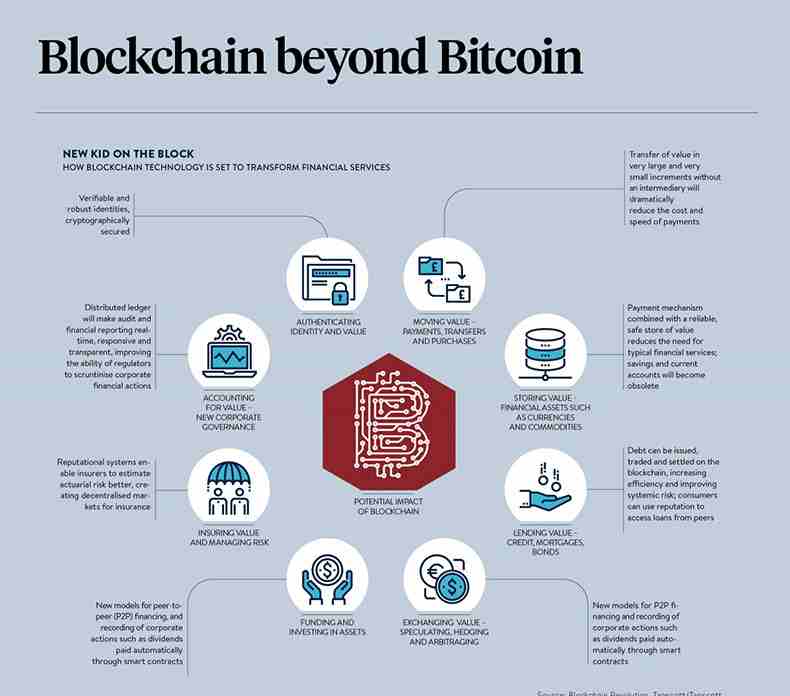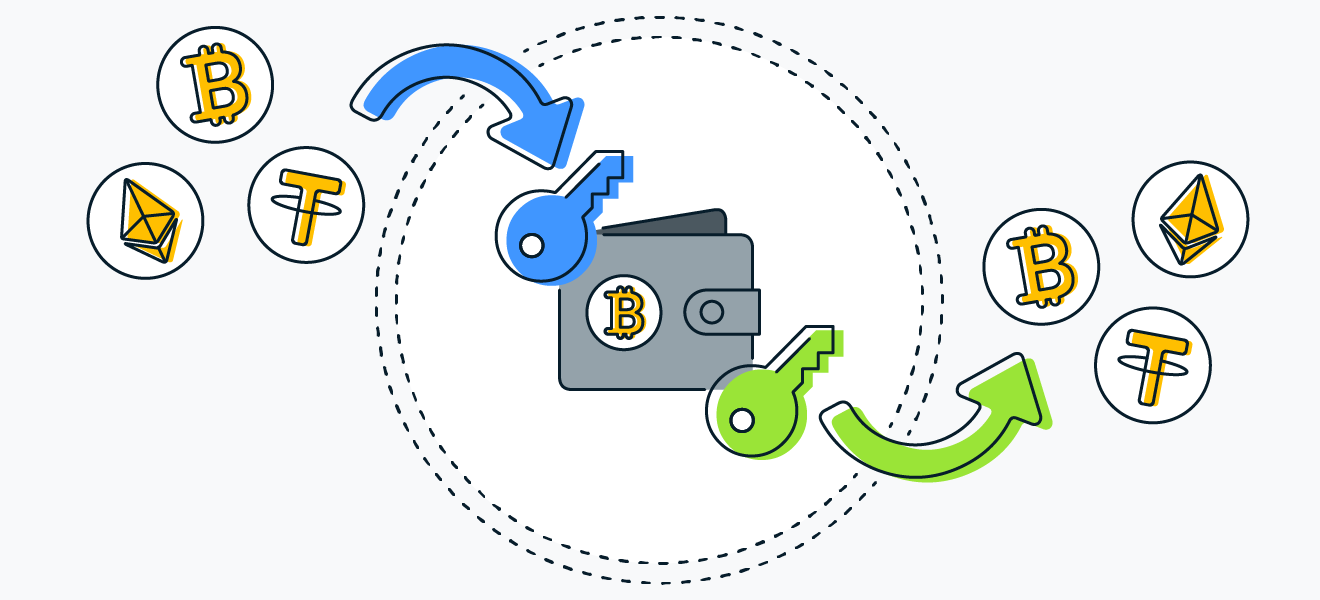How does cryptocurrency work? It’s a question on many minds as digital money changes our world. We break down the mystery here, step by easy step. We start with blockchain, the backbone that keeps crypto strong and secure. You’ll get the nuts and bolts of mining and learn how your crypto keeps itself safe. We go over how you use it in the real world too. You’ll finish knowing just how this tech could shake up our tomorrow.
The Foundation of Cryptocurrency: Blockchain Technology
Decoding Blockchain Explained and Distributed Ledger Technology
Think of blockchain like a magic book. Each page in the book is a list of all deals made with a digital money, like Bitcoin. Every time someone buys or sells with Bitcoin, it goes on a new page. But, once the page is full, it gets locked forever and everyone can see it. This helps keep everything open and hard to mess with.
Now, why can’t people cheat? Each page in the magic book has a special lock. To lock or unlock it, you need a super-secret word. This word comes from the last locked page. If someone tries to change an old page, the locks won’t match, and we’ll all know it’s wrong. That’s how blockchain keeps our digital coins safe.
Everywhere around the world, people keep copies of the blockchain book so that no one person can pretend they have all the right locks. This is what we mean when we say “distributed ledger technology.” It’s like a bunch of magic books all over the world, rather than just one.
Understanding Consensus Algorithms: Proof of Work vs Proof of Stake
There are ways we agree on which pages to add to our magic book. These are called “consensus algorithms.” There are two main types, and they work like games to pick the next page.
The first game is “Proof of Work.” To play, people use their computers to solve tough puzzles. The first to solve it gets to add the new page. It’s like a race where the best puzzle solver wins. But it uses up a lot of power, like leaving all your lights on all the time.
The second game is “Proof of Stake.” For this one, people lock up some of their digital coins as a promise to play fair. Those who do can get picked to add a page based on how many coins they lock and for how long. Think of it as a raffle where the more tickets you put in, the better chance you have to be picked. This game doesn’t need players to solve hard puzzles, so it saves a lot of energy.
Both games have the same goal: to make sure everyone agrees on the new pages without having to trust any single player. It’s like having a fair referee at a sports match.
So, blockchain is a trusty magic book, and the consensus games are the fair referees. Together, they make sure our digital money works right and stays safe. Isn’t that neat?
Cryptocurrency System Mechanics and Security
The Cryptocurrency Mining Process and Hashing in Blockchain
Ever wondered how new digital coins come to life? It’s called mining. With mining, people use computers to solve tricky math puzzles. The first to solve the puzzle gets new coins as a prize. This is part of what folks call “proof of work.” It helps keep a crypto network like Bitcoin safe and running smooth.
To understand mining, we also need to talk about “hashing.” Think of hashing as turning a big chunk of data into a much smaller string of letters and numbers. This unique string is super hard to guess but easy to check if it’s right. Each new piece of data (like transaction details) get its own special hash on the blockchain.
Mining is a big deal. It’s how transactions get checked and new coins are created. Miners gather transaction details to form a “block.” Then, they compete to find a hash that fits the right pattern for the blockchain. When someone gets it right, the new block goes onto the chain. Other folks check it to make sure everything’s A-OK.
Computers that mine work hard and use lots of power. They have to guess millions of hashes super quick. It’s like playing the world’s hardest guessing game, and the winner takes all in coins. But energy use has some people worried, so they’re looking for greener ways to mine.
Cryptocurrency Security Features and The Role of Encryption Methods
Let’s talk safety. Keeping your digital money safe is a big job. The cool part? Crypto has built-in security features. One of these features is encryption. Encryption is like a secret code that scrambles your data, so only people with the right “key” can read it.
Crypto uses two keys: one public and one private. Think of the public key like your crypto address where people can send you money. The private key? That’s your own secret password. You must never share it. It unlocks your digital funds so you can use them. Both these keys talk to each other, but even if someone knows your public key, they can’t touch your money without the private key.
This key stuff is all about “cryptography.” It’s a way to secure information, so only the right person can unlock it. Imagine sending a locked box through the mail. Only the receiver has the key to open it. Crypto works in a similar way.
Encrypted data is a big part of what makes the blockchain tick. Each block has its own encrypted stamp, thanks to hashing. That stamp, or ‘hash’, makes sure that the block’s content can’t be changed without being super obvious.
Crypto wants people to trust it, just like they trust banks. That’s why its security is tough as nails. Every transaction is a secure exchange. It’s designed to stop hackers and keep your digital cash safe. These safety steps mean you can feel good about using crypto.
To sum it up, mining is like a digital gold rush, and encryption is your secret handshake in the world of crypto. Remember, keeping your private key a secret is top priority—think of it as the key to your online treasure chest.
The Comprehension of Crypto Transactions and Storage
Peer-to-Peer Networks in Crypto and Understanding Crypto Transactions
Let’s dive into how crypto moves around. It’s like passing a ball in a game. But this is a game where everyone in a huge circle can see the ball. This “ball” is digital money, and the game is played on a peer-to-peer network. Each player is called a node. They all have a copy of every move, which we call a ledger.
When someone sends crypto, the network checks it. This is done by complex math, making sure the sender has what they say they do. This math puzzle is hard to solve but easy to check. Once solved, it proves the transaction is good. The player who solves it, a miner, tells everyone. They all update their ledger. This way, the same money can’t be spent twice.
Crypto Wallet Functioning and the Importance of Public and Private Keys
Now, imagine a locker that holds your digital money. This locker is your crypto wallet. To open it, you need two keys. One key is public; you can share it with anyone. It’s your address for receiving crypto. The other key is private, and it’s only for you. It’s like the key to a secret diary. You use it to send crypto or to sign off on transactions, proving they’re really from you.
Your keys work together in an amazing way. Crypto doesn’t move from one place to another. Instead, it’s about changing locks and keys on the money in that huge, shared ledger. When you use your private key to send crypto, you’re really putting a new lock on it. Only the person with the right public key can open it next. That’s the new receiver. They now have control. It’s super secure, as long as you keep your private key safe. If someone else gets it, they could take your crypto.
In short, crypto transactions use a peer-to-peer network. This keeps a public ledger that everyone sees. For your own crypto, you use public and private keys, kind of like digital locks and keys. Remember to keep your private key a secret. Then, your digital money is safe.
Trading, Regulation, and Future Prospects
Cryptocurrency Regulation and Understanding Crypto Exchanges
Let’s get into how to use crypto exchanges and the rules they follow. Crypto exchanges are places online where you can trade virtual currencies. Imagine them like game shops where you can swap one type of coin for another. It’s here you make your magic in the world of digital money. But remember, where there’s money, there’s often a watchful eye. Rules for crypto keep everything fair and safe. They stop bad guys from messing with our digital cash. Now, how does this work? Well, these rules make sure everyone trades fair and square. It makes sure the exchange is not a wild west but a safe place to trade.
The Impact of Cryptocurrency Volatility on Investment and Trading Principles
We all hear about prices of crypto going up and down fast; that’s volatility. This can make investing in digital currencies risky but exciting. Think like you’re on a rollercoaster, and you’ve got the picture. Because prices can change quick, smart traders use rules and smarts to make good bets. They look at the market, guess where it’s going, and plan their next move. But it’s not just about quick wins. Understanding crypto’s ups and downs helps you invest with a cool head. And keep your fingers crossed for the future as we see where this crypto rocket is headed!
In this post, we’ve taken a deep dive into the nuts and bolts of cryptocurrency. We started with how blockchain, the heart of crypto, works. We saw how it stores data and keeps it safe. Then, we looked at how crypto uses tough math problems to protect your money.
Next, we explained how mining is key to blockchain and why smart security keeps your coins out of hackers’ hands. We moved on to how your money moves from one person to another without any middle men. We also found out just how vital those secret codes, your keys, are to keeping your stash safe.
Towards the end, we explored the big issues: rules that guide crypto use and the wild swings in coin prices. Becoming wise to how trading works can make a big impact on your wallet.
Cryptocurrency isn’t simple, but with this base knowledge, you can start your journey in the crypto world. Keep in mind: always be smart and safe as you dive into trading and using digital money.
Q&A :
How does cryptocurrency function?
Cryptocurrency operates on a decentralized network using blockchain technology, which is a distributed ledger that records all transactions across a network of computers. Transactions are verified by network nodes through cryptography and recorded in a block. Once confirmed, the transaction block is added to the chain, creating a secure and immutable record.
What technology underpins cryptocurrency?
The foundational technology behind cryptocurrency is the blockchain. A blockchain is a decentralized system of distributed ledgers where transactions are recorded in a secure and verifiable way. This technology ensures transparency, security, and immutability of transaction data.
Can you explain the process of a cryptocurrency transaction?
When a cryptocurrency transaction is initiated, it is submitted to a network and awaits verification. Network members called miners use computational power to solve complex algorithms and validate the transaction. Upon successful verification, the transaction is added to a block in the blockchain. Subsequently, the cryptocurrency balance is updated in the digital wallets of the parties involved.
What makes cryptocurrency secure?
Cryptocurrency is secured by cryptographic techniques that ensure transaction integrity and prevent fraud. The use of public and private keys in transactions provides strong security measures. Additionally, the decentralized nature of the blockchain makes it very difficult for any single entity to manipulate the transaction data or the currency.
Is it possible to trace cryptocurrency transactions?
Yes, most cryptocurrency transactions are traceable due to the public nature of the blockchain. Each transaction recorded on the blockchain has a unique ID and can be viewed by anyone. However, while the transactions themselves are transparent, the identities of the individuals behind the public addresses can remain anonymous unless revealed during a transaction or through other means.





